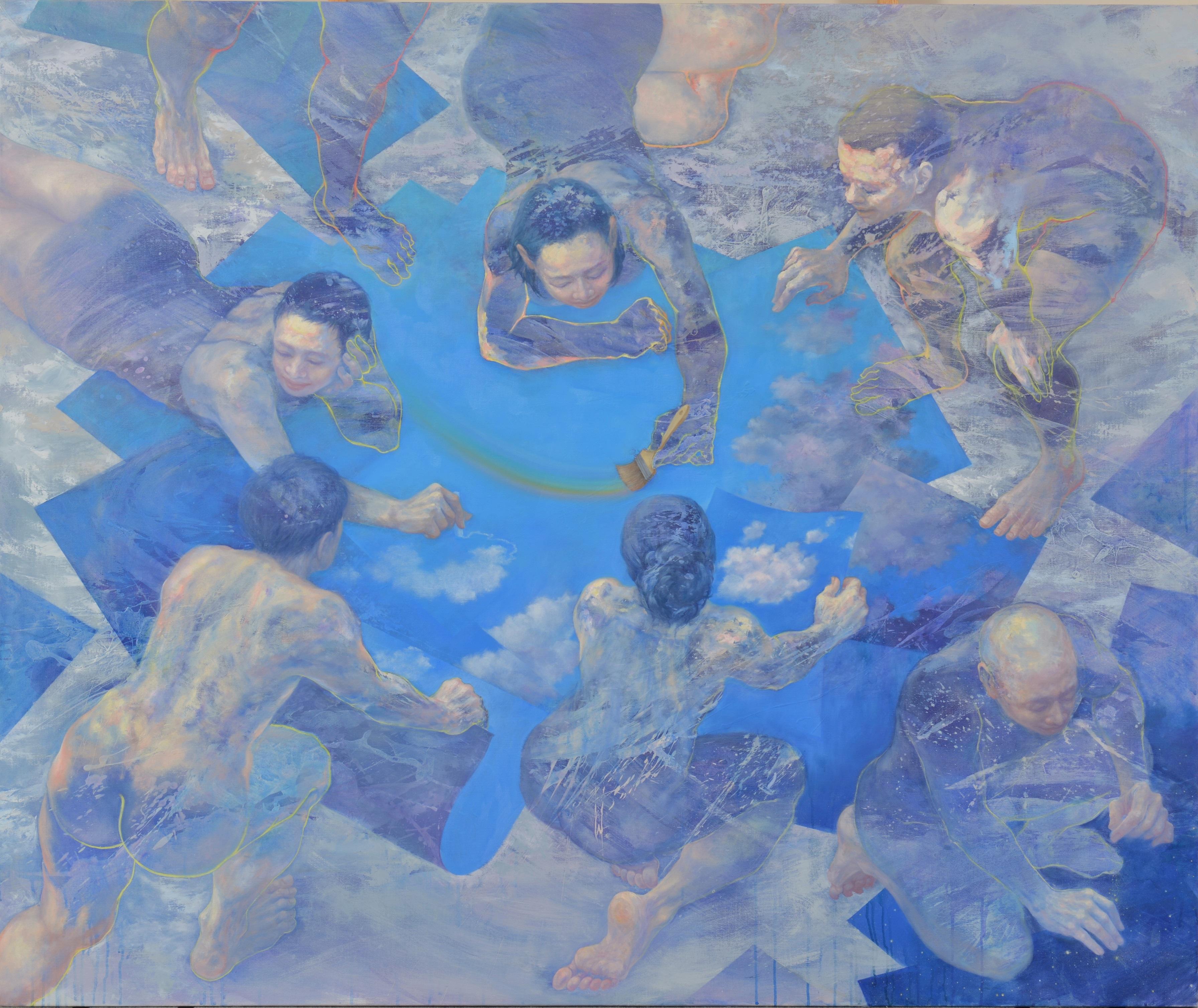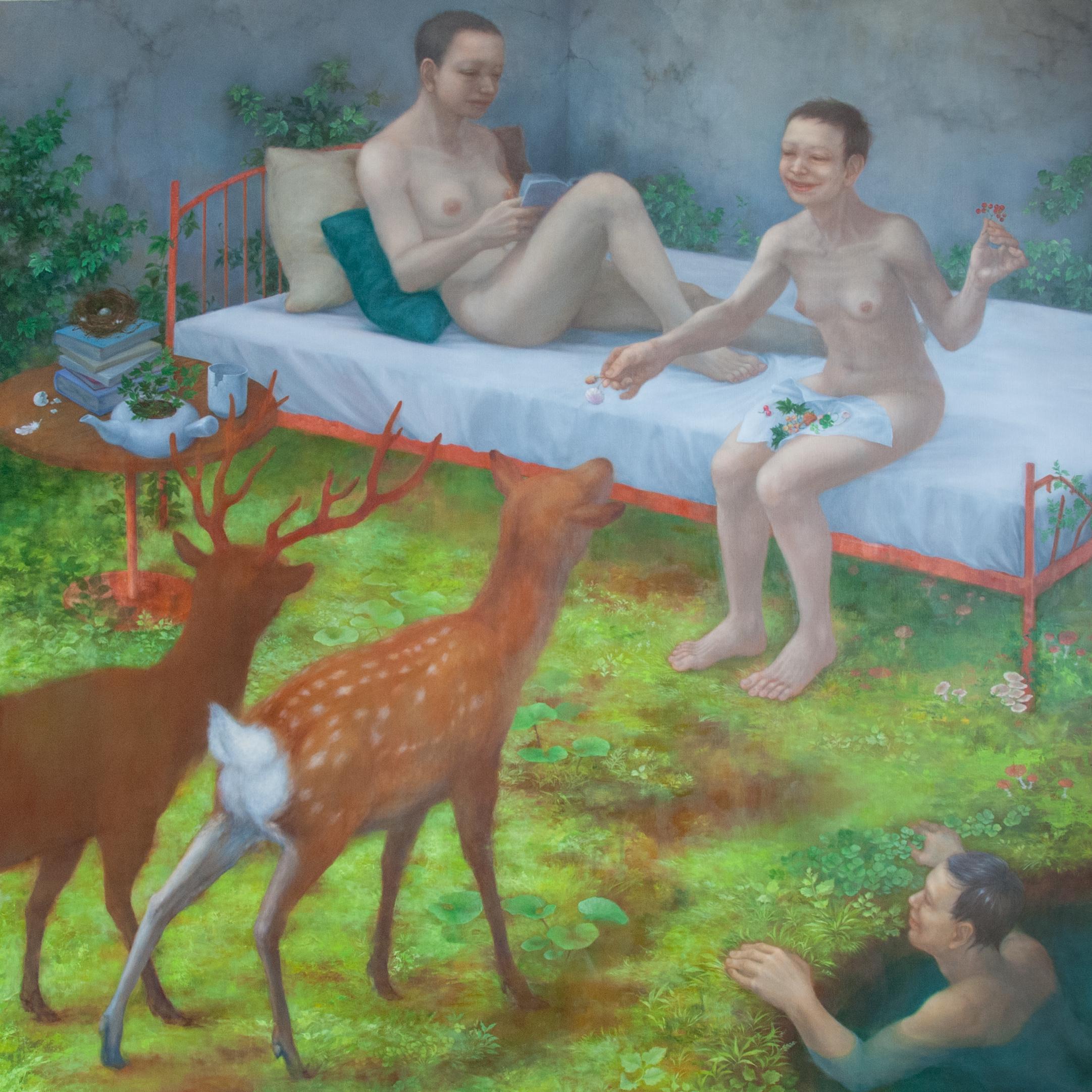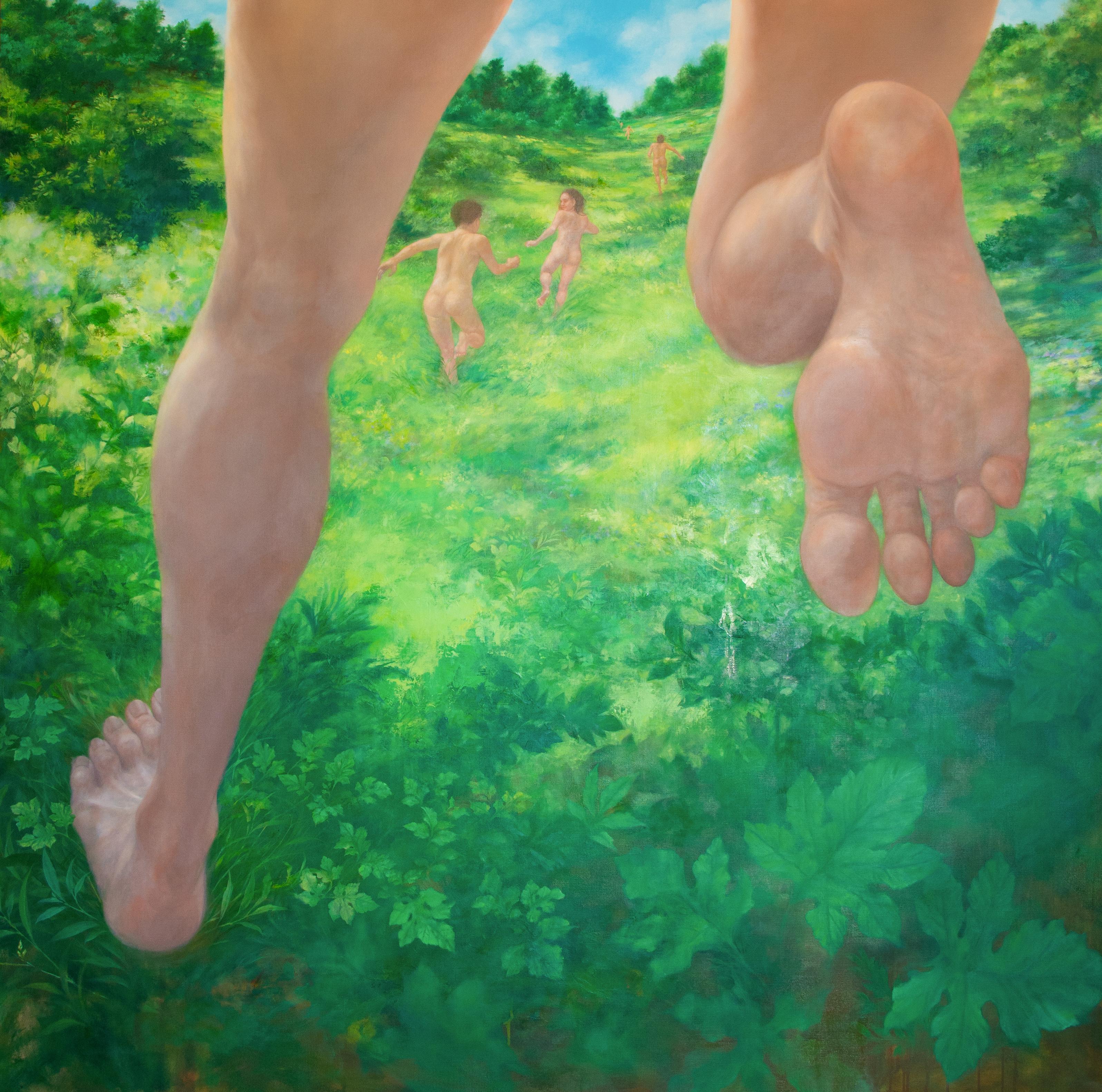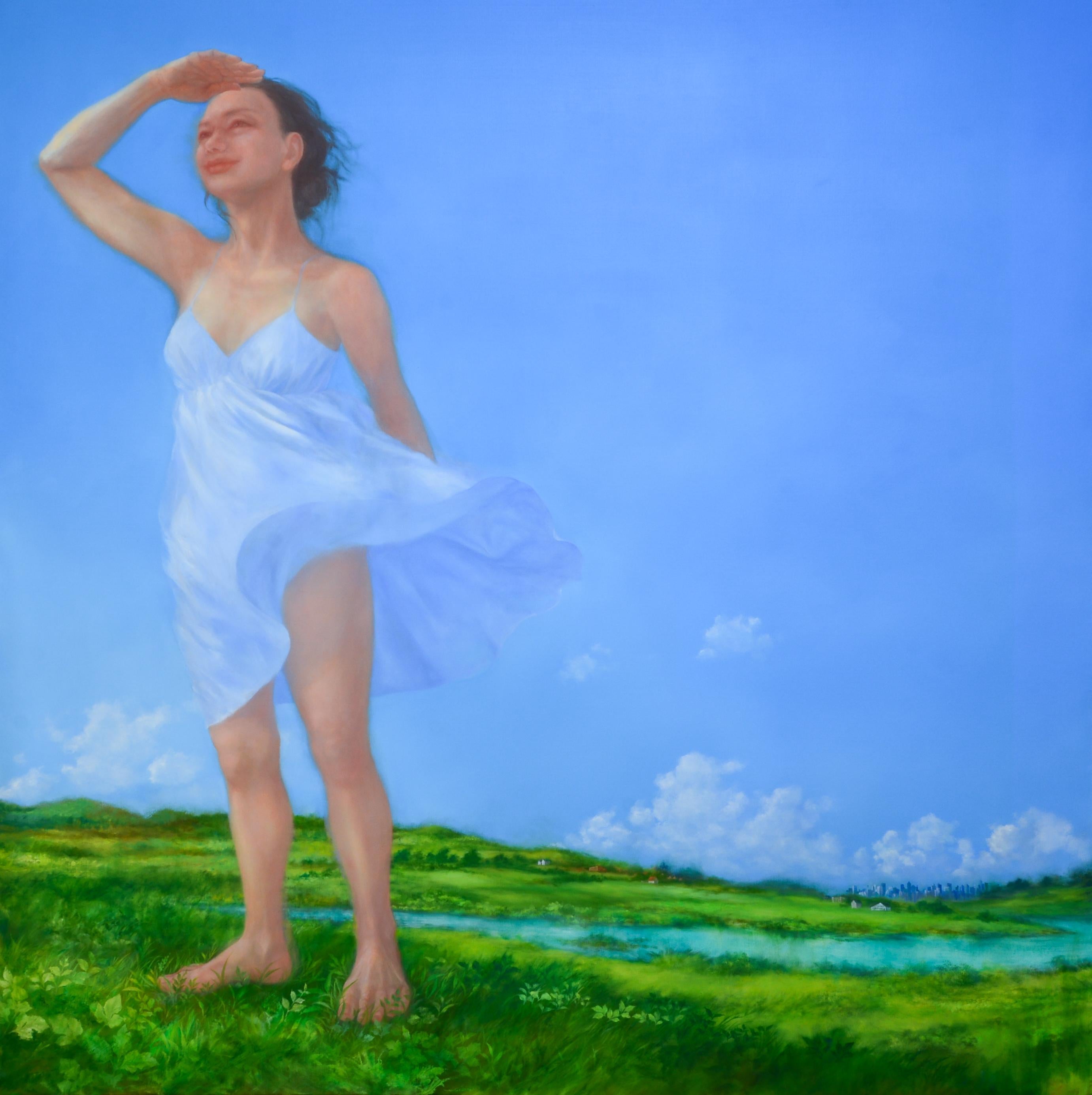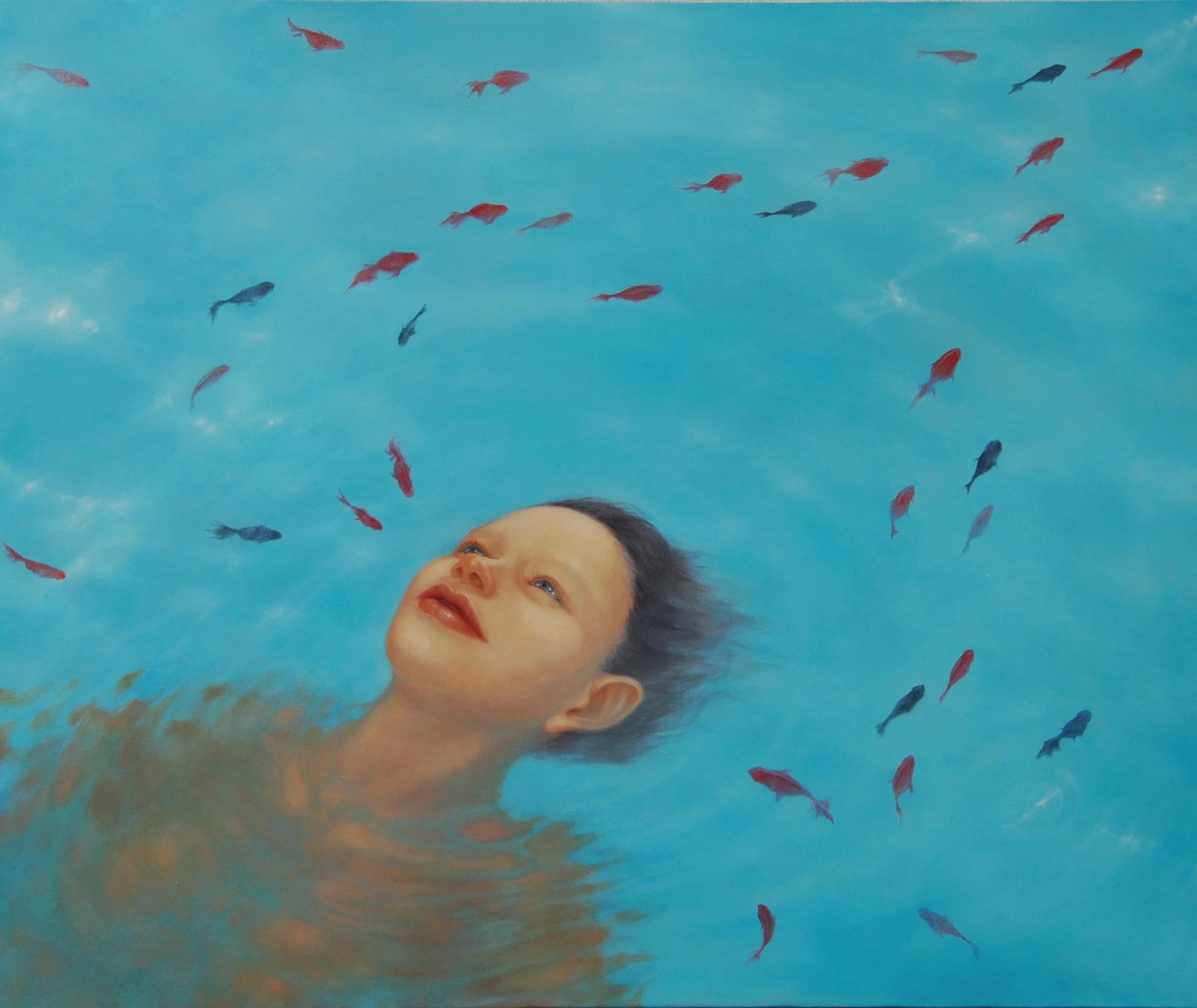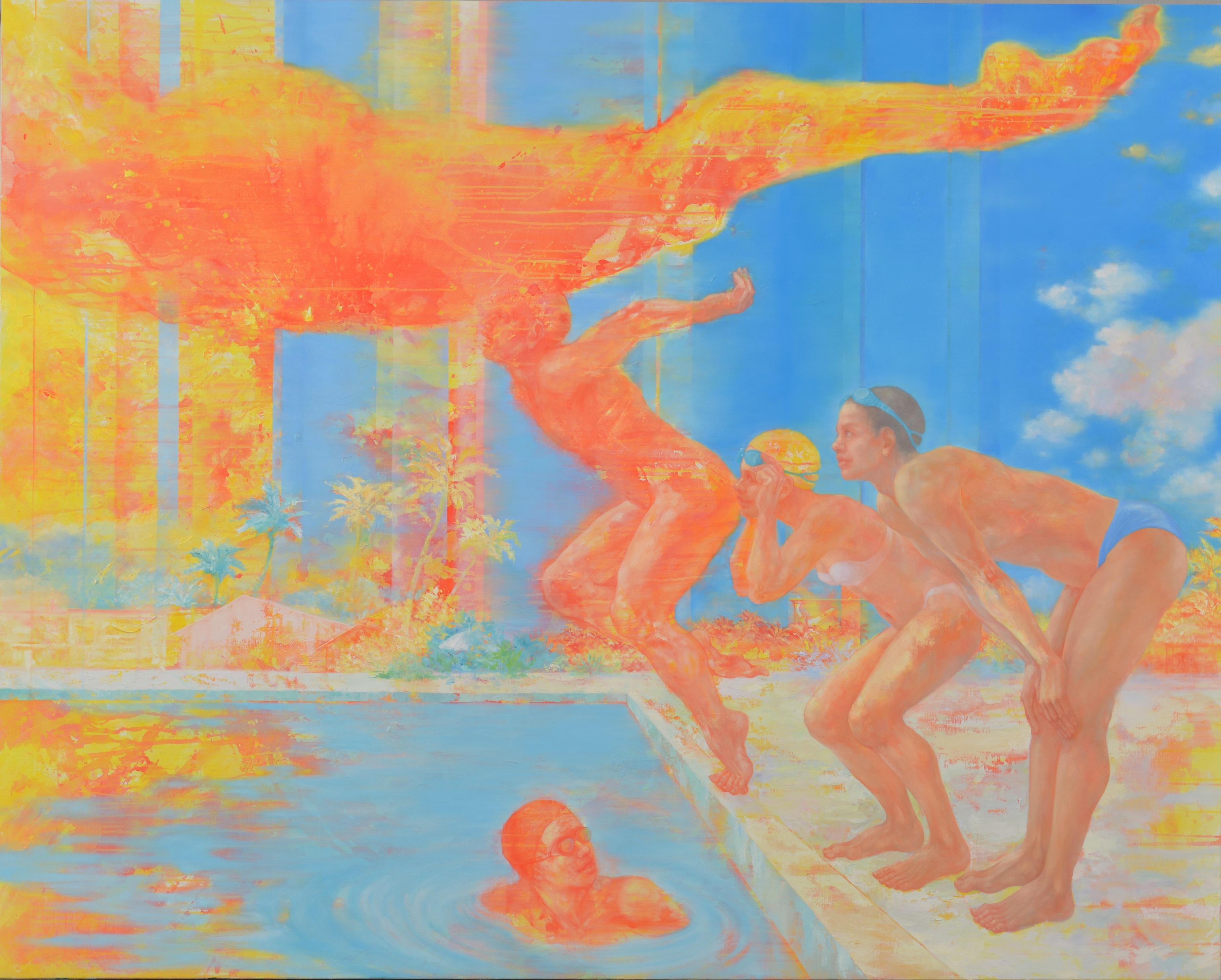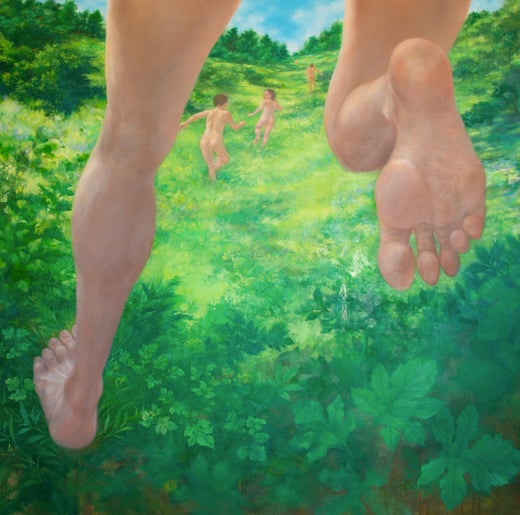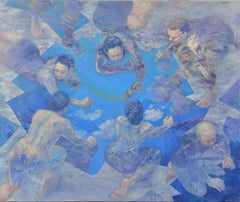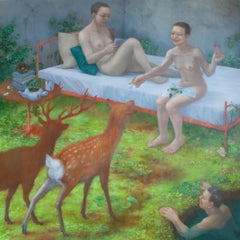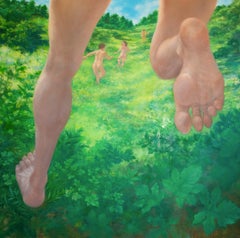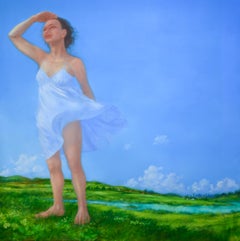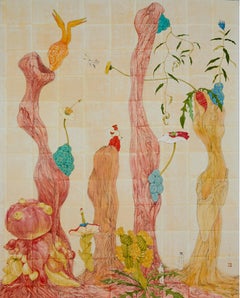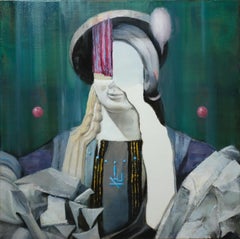Items Similar to Japanese Art - Let’s Talk About A Republic, Which Was Born At The World’s End
Want more images or videos?
Request additional images or videos from the seller
1 of 13
Hiromi SengokuJapanese Art - Let’s Talk About A Republic, Which Was Born At The World’s End2012
2012
$16,000
£12,185.47
€14,027.12
CA$22,929.29
A$25,087.71
CHF 12,945.19
MX$300,422.61
NOK 164,345.27
SEK 153,975.67
DKK 104,753.51
About the Item
Oil on canvas
Hiromi Sengoku is a Japanese artist born in 1982 who lives and works in London, UK. Since 2008, she participated regularly to solo exhibitions in Japan and participated in numerous group exhibitions. She also joined art fairs both domestically and internationally with NICHE gallery and galerie bruno in Paris & Tbilisi. Notable awards include the Holbein Scholarship (2004), the Shell Art Award - Kunio Motoe Jury Prize (2011), Ueno Royal Museum Grand Prize Exhibition Nominee (2015), and the Sompo Japan Nipponkoa Museum of Art FACE Award/ Grand Prix (2018). She also participated as a jury member for the Holbein Scholarship in 2019 & 2021. In addition to my ongoing theme of 'reconstructing classical oil painting techniques and styles with a contemporary perspective,' Hiromi has been using a variety of painting materials in recent years, including acrylics, tempera, and mineral pigments, especially aqueous ones. This exploration stems from a desire to reconsider painting in a society that is becoming increasingly diverse and globalized while reconnecting with my identity as an artist rooted in the East of Japan. Throughout history, painting materials and techniques have developed in close relation to the climate, culture, and society of their respective regions. Artistic traditions from around the world have diversified and, in modern times, actively incorporated influences from other cultures. For example, the transmission of perspective techniques from the West to Japan during the Edo period, as well as the influence of non-Western painting traditions on Western artists from the era of Japonism to modern and contemporary artists like Matisse and Hockney for example, demonstrate the significant impact of cross-cultural exchange on painting. However, when revisiting the history of painting, she noticed that before the differentiation of painting materials and techniques, there were many commonalities. Pre-Renaissance works such as tempera and frescoes shared simplicity in lines and flat color surfaces, and an expression of space that did not rely on perspective. These aspects had significant parallels with Japanese Yamato-e paintings, and there were similarities in the use of isometric perspectives with oblique lines and the depiction of human figures and creatures. This shared expression had a deep connection with the inherent properties of the painting materials.
The artist found the source of these common expressions in ancient cave paintings. Using pigments made from readily available materials, ancient artists created images on cave walls, utilizing the texture of the rock surface to bring their depictions to life with minimal lines, even conveying spatial depth. The desire of humans to 'recreate images on a flat surface' is primal, and the excitement when lines and colors begin to form images, giving birth to 'the world,' is a universal experience transcending time and culture. This primal sensation of 'the world emerging on a flat surface' is what I aim to capture on canvas, allowing viewers to rediscover and experience the 'illusion' inherent in paintings. To achieve this, she deliberately retains elements such as visible drawing lines and the materiality of natural paints in my works. The unpredictable qualities of water-based paints, like their absorption and uncontrollable spreading, not only aid in this endeavor but also infuse the works with an Eastern sensibility.
The subjects of her paintings are drawn from everyday life, often highlighting seemingly inconspicuous moments or words that resonate with me. This process is driven by my desire to depict the universality of our world and, at its core, the hope to find something meaningful even in the textures and stains on the canvas. The use of tempera has been a key discovery for me, as it allows for the seamless combination of water-based and oil-based painting materials, enabling the incorporation of both Eastern and Western aspects of painting into my works. As an artist with roots in Japan who has also learned and lived in both Japan and Western Europe, Hiromi Sengoku explores how to remix Eastern and Western influences within my own work. In today's increasingly globalized society, rigidly adhering to one side feels unnatural. She makes the coexistence of Eastern and Western elements resonate with the issues of lines and color surfaces in painting, and continuously seek ways to achieve this balance in her work.
- Creator:Hiromi Sengoku (1982, Japanese)
- Creation Year:2012
- Dimensions:Height: 63.78 in (162 cm)Width: 63.78 in (162 cm)Depth: 1.58 in (4 cm)
- Medium:
- Movement & Style:
- Period:
- Framing:Framing Options Available
- Condition:
- Gallery Location:Paris, FR
- Reference Number:1stDibs: LU108724368311
Hiromi Sengoku
Hiromi Sengoku is a Japanese artist born in 1982 who lives & works in Tokyo, Japan. She is graduated from Musashino Art University (MAU) in Tokyo in 2004 and Ecole Nationale des Beaux-Arts de Paris in 2007.
About the Seller
4.9
Platinum Seller
Premium sellers with a 4.7+ rating and 24-hour response times
Established in 2013
1stDibs seller since 2018
370 sales on 1stDibs
Typical response time: 4 hours
- ShippingRetrieving quote...Shipping from: Paris, France
- Return Policy
Authenticity Guarantee
In the unlikely event there’s an issue with an item’s authenticity, contact us within 1 year for a full refund. DetailsMoney-Back Guarantee
If your item is not as described, is damaged in transit, or does not arrive, contact us within 7 days for a full refund. Details24-Hour Cancellation
You have a 24-hour grace period in which to reconsider your purchase, with no questions asked.Vetted Professional Sellers
Our world-class sellers must adhere to strict standards for service and quality, maintaining the integrity of our listings.Price-Match Guarantee
If you find that a seller listed the same item for a lower price elsewhere, we’ll match it.Trusted Global Delivery
Our best-in-class carrier network provides specialized shipping options worldwide, including custom delivery.More From This Seller
View AllJapanese Contemporary Art - Citizens Of A Commune Making A New World
By Hiromi Sengoku
Located in Paris, IDF
Oil on canvas
Hiromi Sengoku is a Japanese artist born in 1982 who lives and works in London, UK. Since 2008, she participated regularly to solo exhibitions in Japan and participate...
Category
2010s Contemporary Figurative Paintings
Materials
Oil, Canvas, Acrylic
Japanese Contemporary Art - The Cosmos In A Garden, A Garden In The Cosmos
By Hiromi Sengoku
Located in Paris, IDF
Oil on canvas
Hiromi Sengoku is a Japanese artist born in 1982 who lives and works in London, UK. Since 2008, she participated regularly to solo exhibitions in Japan and participate...
Category
2010s Contemporary Figurative Paintings
Materials
Oil, Canvas
Tomorrow We're Going To Run For Further, And The Say After, We'll Leave...
By Hiromi Sengoku
Located in Paris, IDF
Oil on canvas
Hiromi Sengoku is a Japanese artist born in 1982 who lives and works in London, UK. Since 2008, she participated regularly to solo exhibitions in Japan and participate...
Category
2010s Contemporary Figurative Paintings
Materials
Oil, Canvas
You Should Go To See The World's End, If You've There In Your Heart...
By Hiromi Sengoku
Located in Paris, IDF
Oil on canvas
Hiromi Sengoku is a Japanese artist born in 1982 who lives and works in London, UK. Since 2008, she participated regularly to solo exhibitions in Japan and participate...
Category
2010s Contemporary Figurative Paintings
Materials
Oil, Canvas
Japanese Contemporary Art by Hiromi Sengoku - Nabis
By Hiromi Sengoku
Located in Paris, IDF
Oil on canvas
Hiromi Sengoku is a Japanese artist born in 1982 who lives and works in London, UK. Since 2008, she participated regularly to solo exhibitions in Japan and participate...
Category
2010s Contemporary Figurative Paintings
Materials
Oil, Canvas
Japanese Contemporary Art by Hiromi Sengoku - Beyond The Beyond The Summer
By Hiromi Sengoku
Located in Paris, IDF
Oil on canvas, signed at the back of the artwork
Hiromi Sengoku is a Japanese artist born in 1982 who lives and works in London, UK. Since 2008, she participated regularly to solo e...
Category
2010s Contemporary Figurative Paintings
Materials
Oil, Canvas, Acrylic
You May Also Like
Resultado Del Deseo - 21st Century, Contemporary, Figurative Painting, Japanese
By Mari Ito
Located in Barcelona, Catalonia
Mari Ito was born in Tokyo, Japan in 1980. She majored in Nihonga, Japanese-style painting made with traditional practices, techniques and materials. She moved to Barcelona (Spain) i...
Category
21st Century and Contemporary Contemporary Figurative Paintings
Materials
Sumi Ink, Mixed Media, Wood Panel, Washi Paper, Pigment
A person who used to be an enemy
By Akihiko Sugiura
Located in New Orleans, LA
Akihiko says of his work…
My body of work is an experiment in rejecting conventional views of painting, reconsidering the very act of viewing, and reassessing traditional oil painti...
Category
21st Century and Contemporary Contemporary Abstract Paintings
Materials
Canvas, Oil
Post-Renaissance NO2
Located in Porto, 13
"Through Traveling You're Able To Understand The World & Find Endless Inspiration" - Lixian Cai
Lixian began to travel outside of China, documenting each ...
Category
2010s Conceptual Landscape Paintings
Materials
Oil
Nature, Nurture
By Yuji Hiratsuka
Located in Palm Springs, CA
While the images have some resemblance to traditional Japanese Ukiyo-e prints, their sense of whimsy, satire and irony relate more closely to contemporary life and western sensibilit...
Category
2010s Contemporary Figurative Prints
Materials
Intaglio
Invitation to the Paradise #11
Located in San Francisco, CA
Artist: Sakurai Takami - Japanese (1928-2016)
Title: Invitation to the Paradise ST#11
Year: circa 1972
Medium: Oil on Canvas
Sight size: 18 x 24 inches.
Framed size: 21 x 27 inches
Signature: Unsigned. Label on old frame
Condition: Very good
Frame: Framed in original frame. Frame in poor condition
This oil on canvas is by the noted avant garde Japanese artist Sakurai Takami (1928-2016). It was created sometime between 1971, when Takami lived in San Francisco and was a member of and exhibited with the “Konnyaku Commune” and 1978 when he exhibited with the Vorpal Gallery in San Francisco. This painting was purchased from the Vorpal Gallery. The painting is in very good condition. It is unsigned, but the title is on the side of the metal frame. The frame is fine, but the mat is stained and in poor condition. I will include the frame for protection and provenance.
Sakurai was a main member of the avant-garde art group “Kyushu-ha”. Kyushu-ha” created a major trend among contemporary art in post-war Japan, which spread from Fukuoka to the whole country and also France, the United States and other overseas countries. Throughout his life he was very dramatic; his enormous and diverse works are energetic and face us with the true meaning of expression. Initially his main focus was on informal paintings, but it gradually expanded towards anti-artistic objects and performances. His works are characterized by the usage of materials that are connected with the smell of a workers life, such as coal tar, asphalt, woven mats and dungarees (jute bag).
Shortly after Kyushu-ha disbanded in 1968, Sakurai Takami moved to San Francisco. From 1973 onward, he lived in France. The people and faces in Sakurai’s paintings are coloured red, so that the colour, a symbol of heat, becomes a “social sign”. Each person has a life of their own, while at the same time expressing the colourful life of human communities, like the hippies.
His theme may be drawing “humanity and the universe” with a loving embrace of “peace” and “life”.
1953 graduated Fukuoka Liberal Arts University
1955 40th Nika Art Exhibition, Tokyo Metropolitan Art Museum
1956 Persona Exhibition, outer west side of the Fukuoka prefectural office
1957-68 part of Kyushu-ha
1965 went to the United States (~’67)
1970 “Kanousei e no Ishi“ Kitakyushu Hachiman Museum of Art
Kyushu: Trends in Japanese Contemporary Art Exhibition, Fukuoka Bunka Hall
Sakurai Takami solo exhibition, Fukuoka Bunka Hall
went to the United States for the second time, started working with the konyaku commune (San Francisco)
1971 Konyaku Revolution Art Exhibition (San Francisco)
1973 Nagoya mayor nominating election convention, Azabu public hall
moved to France
1974 formed the group “Kusuguri” (Paris)
1975 7th...
Category
1970s Other Art Style Figurative Paintings
Materials
Canvas, Oil
Ephemeral Elegance
By Kumikaho Oshima
Located in PARIS, FR
2009, Unique Artwork
Oil on Canvas
63 4/5 × 51 1/5 in - 162 × 130 cm
The artwork is signed by the Artist on verso of the canvas & stamped with the logo of the studio of the Artist on...
Category
2010s Contemporary Paintings
Materials
Oil
